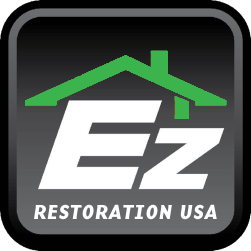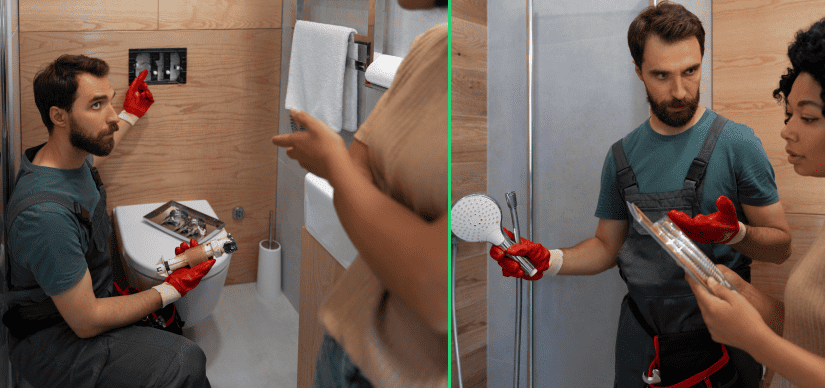Guidelines for Handling Plumbing Emergencies Appropriately
Imagine a bitterly cold winter evening, and you suddenly awaken to the unsettling sound of water cascading from a burst pipe within your residence. Panic sets in as you attempt to contain the flooding, desperately searching for a solution. It’s at this precise moment that you come to recognize the indispensable role played by an emergency plumber.
When plumbing crises occur, having a highly skilled professional readily available can mean the difference between a minor inconvenience and a potentially catastrophic ordeal. In this all-encompassing guide, we will explore the Guidelines for Dealing with Plumbing Emergencies Appropriately, ensuring that you are adequately equipped to address unexpected plumbing disasters.
So, what steps should you take when confronted with a plumbing emergency, and why is an emergency plumber your primary line of defence? Let’s uncover the answers.
Assess the Situation
Identifying the Severity of the Emergency
When you find yourself faced with a plumbing emergency, your first step should be a meticulous evaluation of its seriousness. Plumbing issues can present a wide range of urgency levels. For instance, a burst pipe constitutes a dire emergency that requires immediate and decisive action. The gushing water can wreak havoc on your property and lead to substantial damage.
On the other hand, a minor faucet drip, while not an immediate crisis, should not be overlooked. Over time, such seemingly insignificant leaks can escalate into larger issues, potentially causing water damage and even mold growth. Therefore, it’s essential to address even minor leaks promptly to prevent future complications.
Turning Off the Water Supply
In the majority of situations, it is crucial to promptly locate and turn off the main water supply to your residence. One of the primary tasks you should undertake during your homeownership is becoming intimately acquainted with the exact location of the shut-off valve. This seemingly simple but vital action can play a pivotal role in mitigating potential water damage while you work towards resolving the plumbing issue at hand.
The primary water shut-off valve functions as the initial protective barrier for your residence during critical situations. Normally situated close to where the main water supply enters your home, this valve enables you to stop the water supply throughout your entire property. This immediate action helps mitigate the risk of potential harm.
Whether you’re dealing with a burst pipe, a malfunctioning appliance, or any other plumbing crisis, turning off the main water supply is a crucial initial step that can save you from extensive repair costs and disruption to your daily life.
Safety First
Protecting Your Property
Before embarking on any do-it-yourself (DIY) repair endeavors, it is highly advisable to take a series of proactive measures aimed at safeguarding your property. One crucial aspect of this preparation involves carefully relocating valuable items and possessions that are particularly vulnerable to water damage from the area affected by the plumbing issue.
By meticulously executing this step, you not only demonstrate a prudent level of preparedness but also significantly curtail the potential harm that water-related incidents can inflict upon your assets and home.
In this context, it is vital to make a comprehensive inventory of the items at risk, including but not limited to electronic equipment, crucial documents, sentimental heirlooms, and any other possessions that could sustain damage due to water exposure. The swifter and more methodical your removal of these items, the better you can prevent irreparable harm, avoid emotional distress, and ultimately mitigate the financial burden associated with repair or replacement costs.
This thoughtful and meticulous safeguarding process serves as a vital foundation for a successful DIY repair effort, ensuring that you can tackle the plumbing issue with greater peace of mind and efficiency.
Ensuring Personal Safety
When tackling any plumbing repairs, prioritizing safety is paramount, especially in hazardous situations. Having the proper protective gear is indispensable to shield yourself from harm and avoid accidents on the job.
Tasks involving exposure to chemicals or sewage warrant sturdy gloves as the first line of defense. Gloves provide a vital barrier preventing dangerous substances from contacting your skin. Equally vital are safety goggles to shield your eyes against splashes, vapors, or projectile impurities.
Additional gear like masks, protective clothing, and closed-toe shoes provide further safeguards depending on the specific job. Also crucial is reviewing and following safety procedures before undertaking repairs. Preparation and prevention are key to plumbing work safely. Investing in quality safety equipment and protocols pays dividends through reduced risks and peace of mind.
DIY Quick Fixes
Unclogging Drains
Clogged drains can pose a frustrating and common plumbing challenge. When confronted with a blocked drain, it’s essential to follow a systematic approach to resolve the issue without causing further damage to your plumbing system.
Start by using a plunger or a drain snake, which are effective tools for dislodging the blockage. Avoid the temptation to rely on chemical drain cleaners, as they may provide a short-term solution but can have adverse long-term effects on your pipes, potentially leading to deterioration and more severe clogs.
Repairing Minor Leaks
While minor leaks can often be temporarily managed with pipe tape or clamps, these are only quick fixes, not permanent solutions. Temporary measures simply halt dripping for a short time but don’t address underlying issues. It’s crucial to contact a professional plumber to properly diagnose the cause of leaks and implement comprehensive repairs.
Only skilled plumbing experts can provide complete, long-term solutions to restore watertight pipes and prevent escalation into major ruptures or water damage. Though quick fixes have their use, they are no substitute for procuring qualified repairs to fully resolve plumbing leaks.
Contacting Professional Help
Hiring a Licensed Plumber
When faced with a plumbing emergency that demands immediate attention and proves to be too complex to diagnose and resolve on your own, it is wise to get in touch with a licensed plumber. These experienced professionals bring a wealth of knowledge to the table, assuring a smooth resolution to your intricate plumbing problem.
Emergency Plumbing Services
Many reputable plumbing companies offer round-the-clock emergency plumber services to address plumbing crises at any time of day or night. Having the contact information for such services readily available is imperative, as plumbing emergencies can occur suddenly and at inconvenient hours. This emergency plumber can provide immediate assistance, preventing further damage and helping you regain control of the situation, whether it’s a midnight pipe burst or a weekend sewer backup.
Preventing Future Emergencies
Regular Maintenance
The prevention of plumbing emergencies begins with proactive and routine maintenance. Schedule regular check-ups with a professional plumber to identify and address potential issues before they have a chance to escalate into full-blown emergencies. During these maintenance visits, a plumber can inspect your entire plumbing system, looking for signs of wear and tear, leaks, or areas that require attention. Addressing these issues in their early stages can save you from the hassle and cost of dealing with more severe problems down the road.
Upgrading Plumbing Systems
Outdated plumbing systems are more susceptible to emergencies and can lead to higher water bills and inefficiency. Consider upgrading to modern, efficient plumbing systems to minimize the likelihood of future problems. Newer systems often come with improved materials and technology that enhance durability, reliability, and water conservation. Upgrading can be a long-term investment that not only safeguards your property but also reduces your environmental footprint and utility expenses.
Conclusion
Effectively handling plumbing emergencies demands a multifaceted approach that hinges on swift decision-making, rigorous safety measures, and a keen sense of when to enlist professional assistance. It’s paramount to grasp that the ability to manage such crises effectively can make all the difference. This comprehensive guide aims to equip you with the knowledge and skills required to navigate these challenging situations confidently, ultimately minimizing both the physical and emotional toll associated with plumbing problems, while simultaneously ensuring the protection of your home and personal welfare.
The comprehensive guidelines contained within this guide encompass a wide array of strategies and techniques, covering everything from immediate safety measures to DIY solutions for common issues. By following these guidelines meticulously, you’ll be better prepared to limit damage, mitigate stress, and ensure the ongoing integrity of your plumbing system. The ultimate objective is not only to tackle the immediate problem at hand but also to foster a proactive approach to plumbing maintenance, reducing the likelihood of future emergencies.


